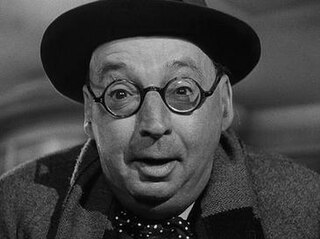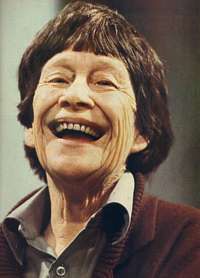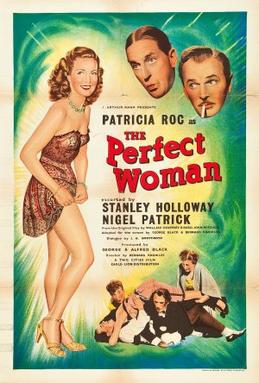Related Research Articles

William Miles Malleson was an English actor and dramatist, particularly remembered for his appearances in British comedy films of the 1930s to 1960s. Towards the end of his career he also appeared in cameo roles in several Hammer horror films, with a fairly large role in The Brides of Dracula as the hypochondriac and fee-hungry local doctor. Malleson was also a writer on many films, including some of those in which he had small parts, such as Nell Gwyn (1934) and The Thief of Bagdad (1940). He also translated and adapted several of Molière's plays.

Sheila Mary Florance was an Australian theatre, television and film actress. She was best known for her performance as elderly, alcoholic convict Lizzie Birdsworth in the television series Prisoner.
The Green Room Awards are peer awards which recognise excellence in cabaret, dance, drama, fringe theatre, musical theatre and opera in Melbourne.

The Princess Theatre, originally Princess's Theatre, is a 1452-seat theatre in Melbourne, Victoria, Australia. Established in 1854 and rebuilt in 1886 to a design by noted Melbourne architect William Pitt, it is the oldest surviving entertainment site on mainland Australia. Built in an elaborate Second Empire style, it reflects the opulence of the "Marvellous Melbourne" boom period, and had a number of innovative features, including state of the art electric stage lighting and the world's first sliding ceiling, which was rolled back on warm nights to give the effect of an open-air theatre.
Ernest Henry Clark Oliphant, commonly referred to as E. H. Oliphant or Professor Oliphant, was an Australian journalist, an authority on Elizabethan literature, a popular public speaker and occasional playwright.

Her Majesty's Theatre is a 1,700-seat theatre in Melbourne's East End Theatre District, Australia. Built in 1886, it is located at 219 Exhibition Street, Melbourne. It is classified by the National Trust of Australia and is listed on the Victorian Heritage Register.

The Upper Yarra Reservoir is located east of Melbourne, Victoria, Australia, beyond Warburton within the locality of Reefton. Water from Upper Yarra Reservoir supplies towns in the upper Yarra Valley, and Silvan Reservoir, which transfers water to most parts of Melbourne.

George Musgrove was an English-born Australian theatre producer.

The Comedy Theatre is a 1003-seat theatre in Melbourne's East End Theatre District. It was built in 1928, and was designed in the Spanish style, with a Florentine-style exterior and wrought-iron balconies. It is located at 240 Exhibition Street, and diagonally opposite Her Majesty's Theatre.

The Perfect Woman is a 1949 British farce comedy film directed by Bernard Knowles and written by George Black, Jr and J. B. Boothroyd, based upon a play by Wallace Geoffrey and Basil Mitchell. The screenplay concerns a scientist who creates a robotic woman in his lab.

The Hoddle Bridge is an arch bridge that carries Punt Road over the Yarra River between Richmond and South Yarra in Melbourne, Australia. It is a five-lane road bridge with narrow footpaths on either side. It is of continuous reinforced concrete T-beam construction with five segmental arched spans, supported on transverse piers, and linked by concrete cross-beams.
St Martins Youth Arts Centre is a youth-focused performing arts centre in South Yarra in inner Melbourne. It is a non-profit organisation that makes contemporary theatre works for adult audiences and runs weekly drama workshops for young people.
The Invisible Circus is a play by Sumner Locke Elliott set in the world of radio drama. A production by John Carlson ran for six weeks at the Independent Theatre, Sydney in 1946. and in Melbourne later that year by the Little Theatre produced by Irene Mitchell.
Alan Burke was an Australian writer and film director and producer. His credits include the musical Lola Montez.

Montague Macgregor Grover, commonly referred to as "Monty Grover", was an Australian journalist, editor of the Sydney Sun.
Ethel Morrison, nicknamed "Morry" or "Molly" and described as a "large lady with a large voice", was a contralto singer from New Zealand who began her career in Gilbert and Sullivan operas and Edwardian musical comedies in England. She later acted mostly in Australia and was noted for her performances in domineering roles.
Jack Beresford Fowler, generally referred to as Beresford Fowler or J. Beresford Fowler, was an Australian actor and stage director, remembered for his little theatre productions in Melbourne.
Irene Gladys Mitchell was an Australian actor and theatre director, prominent in the little theatre movement in Melbourne.
The Arrow Theatre was an Australian theatre in the Melbourne suburb of Middle Park. It was located at 1–3 Armstrong Street, opposite the Middle Park railway station. It seated only 200 persons but had a stage large enough for ambitious productions.
Brett Randall was an British-born Australian actor and theatre director. He was the founder of Melbourne's Little Theatre, which became St Martins Youth Arts Centre.
References
- ↑ "The Little Theatre". The Herald . No. 17, 014. Victoria, Australia. 27 November 1931. p. 14. Retrieved 23 September 2018– via National Library of Australia.
- ↑ Sandy Graham. "Memories of Irene Mitchell". Theatre Heritage Australia. Retrieved 28 September 2022.
- ↑ ""The Miser" Coming to Theatre Royal". Camperdown Chronicle . Vol. LXXV, no. 4093. Victoria, Australia. 8 May 1951. p. 1. Retrieved 24 April 2023– via National Library of Australia.
- ↑ "French Comedy Next C.A.E. Play". Camperdown Chronicle . Vol. LXXV, no. 4096. Victoria, Australia. 18 May 1951. p. 3. Retrieved 24 April 2023– via National Library of Australia.
- ↑ "Theatre Booming in Country Towns". The Age . No. 30, 062. Victoria, Australia. 4 September 1951. p. 2. Retrieved 24 April 2023– via National Library of Australia.